Tools of the Trade - May
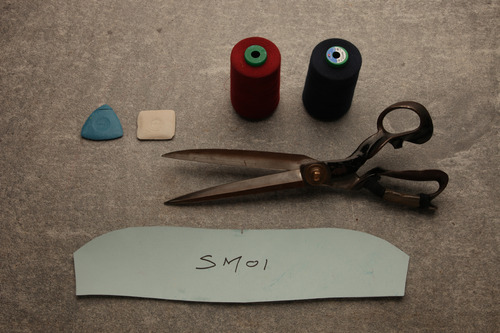
May’s Tools of the Trade takes us to Great Yarmouth, where Yarmo have been manufacturing their Fisherman’s Smock since 1898.
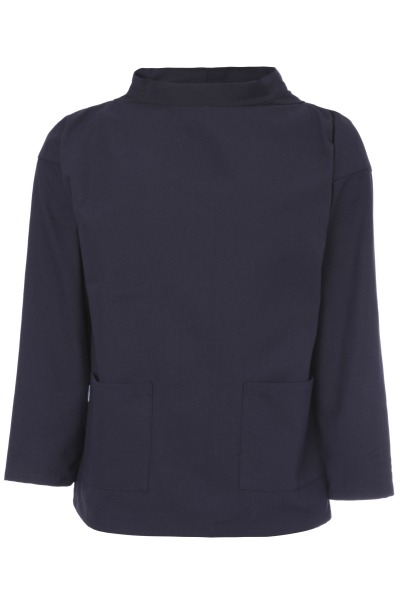
This classic piece of workwear has been an essential outerlayer for British fishermen for over a century, but it has also been popular with painters, sculptors, potters, craftsmen… and shopkeepers; most of us here at Labour and Wait have one. So what is it and why do we like it? Let us explain.

The fisherman’s smock is a classic example of functional, utilitarian clothing. This Folkestone fisherman is wearing the traditional pocketless version - cut from sailcloth, this garment was a strong and sturdy extra layer that kept the wearer warm and dry, protected his woollen jumper, and was comfortable and easy to work in. The short sleeves prevented the cuffs getting wet - a feature also seen on guernsey jumpers and breton shirts - while the tight fit and high neck ensured maximum protection from the elements.
The Yarmouth Stores supplied this and other items of clothing and chandlery from their harbourside warehouses on the outermost tip of the east of England. By 1914 they had opened up branches in ports all around the coast, from Brixham and Padstow in Cornwall to Grimsby, Hull and North Shields all the way up to Lerwick in Scotland. The fishing fleets moved around the coast, so a shop would be opened up for two or three months and as the herring shoals moved on the shop stock would be put aboard a drifter and transported to the next port.
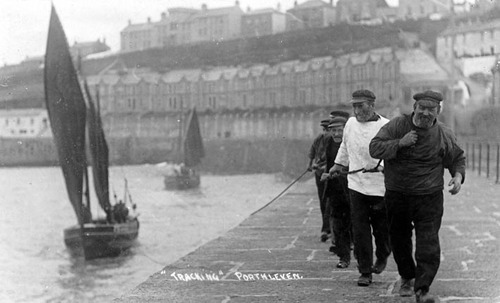
By 1910 and the heyday of the herring industry Yarmo were supplying smocks to fishing communities throughout Great Britain. But it wasn’t just a uniform for fishermen to work in - the practical, utilitarian nature of the fisherman’s smock meant it was adopted by many artists and artisans.

Here Barbara Hepworth wears a smock as she sketches. In the early decades of the Twentieth Century St. Ives in Cornwall became a popular destination for artists and we can imagine the inspiration provided by the smocks being worn by the local crews - such as this rather motley bunch from along the coast in Mousehole. The cheap, tough, easy to find smocks provided the perfect protection for artists as well as sailors.
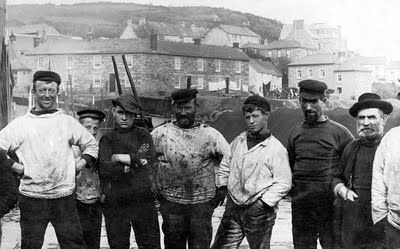
These white smocks show their sailcloth origins, and they are still made from the same material today, in particular a blue sailcloth which washes and ages beautifully, very much like good denim. The only alterations for the modern sailor or artist are longer sleeves and two patch pockets.
So what of May’s Tools of the Trade? Chalk, shears and thread, the essential tools of the tailor. But Yarmo’s process has been modernised from the days of chalking patterns by hand. Sharon Bowles, Factory Manager at Yarmo, talks us through the manufacturing operation:
“Patterns are printed via computer to a plotter machine by Barry our cutting room supervisor. We have kept the old card patterns for back-up, as you never know when you might need them.”
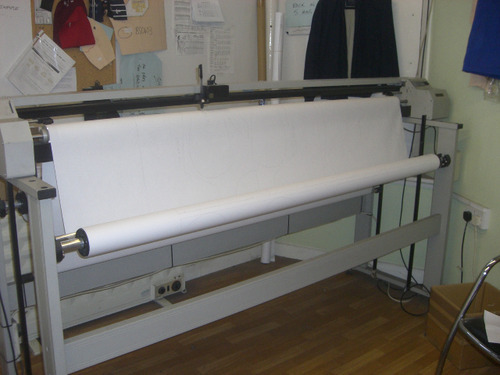
“Once the pattern has been drawn up on paper it is labelled with a job sheet ready for laying.”
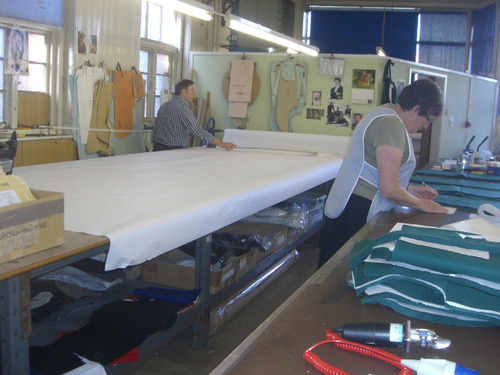
“The required fabric is rolled out and measured to the lay plan. The quantity is checked and the fabric is laid up depending on the number of garments required.
Lorraine is now ready to cut the lay out, the knife she uses will depend on the depth of the cloth in the lay.”

This is the largest of Yarmo’s cutters, but other sizes are used depending on the size of the lay.

“Once the lay is cut it is then passed to Sue to be fitted up into bundles of work with a work ticket ready for the machinist.”

The ‘bundle up table’.
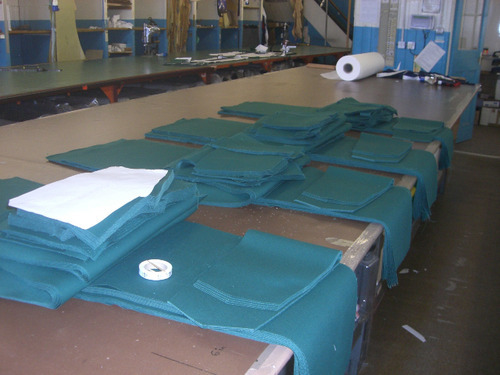
“These bundles are given out to the girls on the flat machines who stitch on the pockets, labels and collars.”
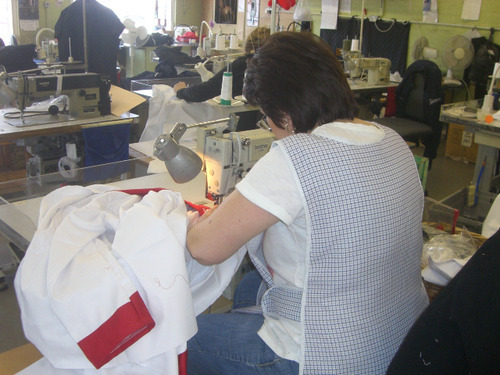
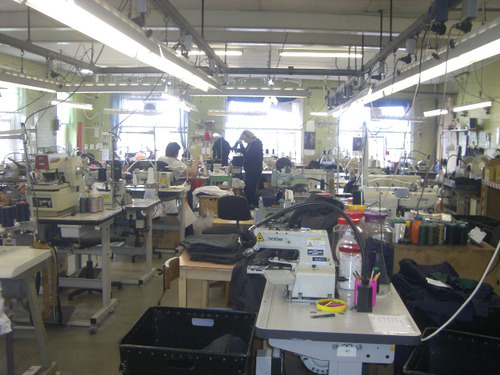
“After this, the bundle is passed to an overlocker to have the sleeves sewn in and the body sewn together.”

“They pass the work back to the flat machinist who hems the sleeves. The complete bundles finally go to the finishing machines and through to quality control. Once the garments are checked over by Debbie she labels and bags them ready to go to Lionel in the warehouse - and ready for despatch to our customers.”
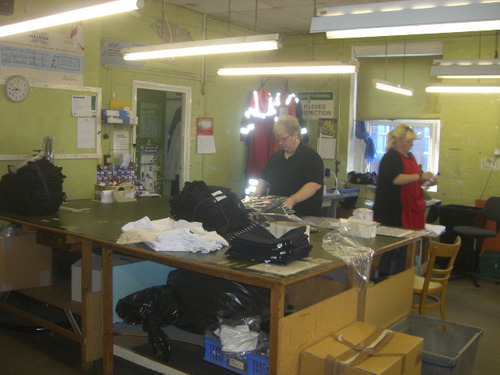
“Although smocks are still popular today, they are worn more for leisure wear - although I do know of some fisherman who still wear our smocks for fishing.”
Whether for sailor or sculptor, the fisherman’s smock is very much the traditional garment that is as wearable today as it ever was. Our thanks go to Sharon and all at Yarmo for sharing this information and for supplying us with pictures.
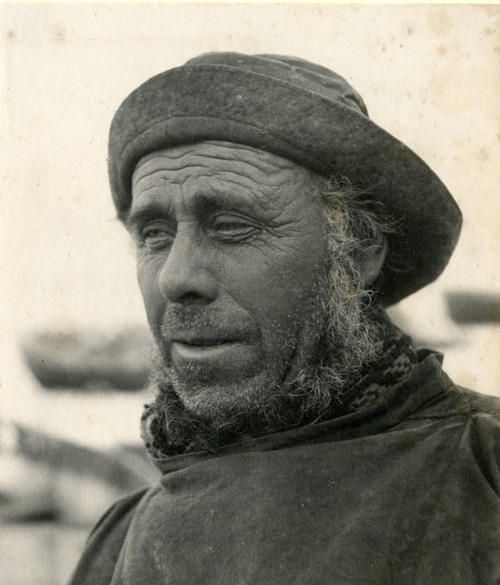
The author wearing his smock, yesterday.
Pictures from the National Maritime Museum Archive and the Pentreath Photographic Archives. Photograph of Eli Farrow the fisherman by Walter Clutterbuck, from the Norfolk County Council Library.



